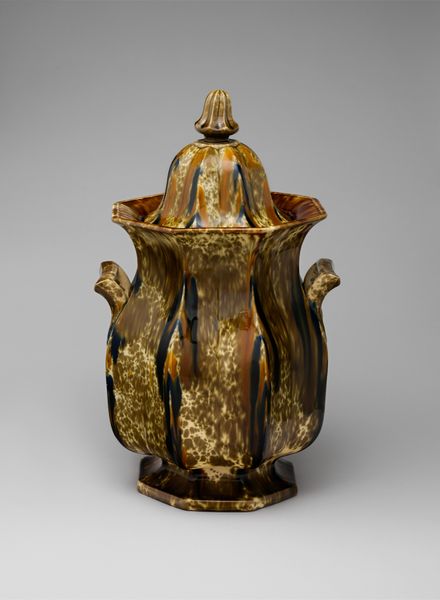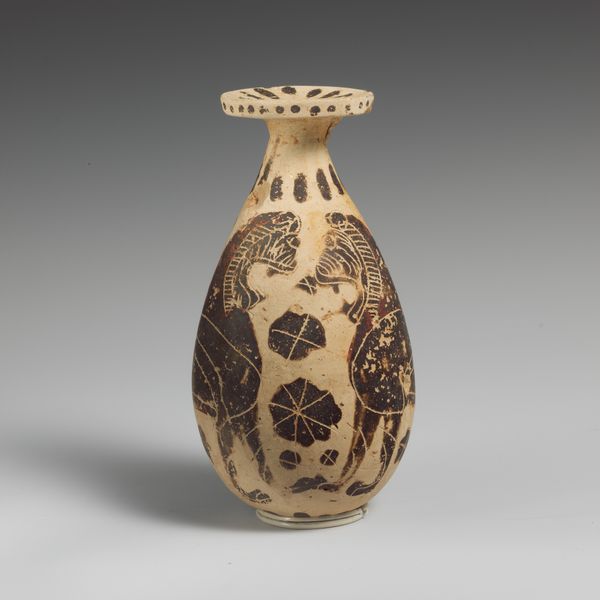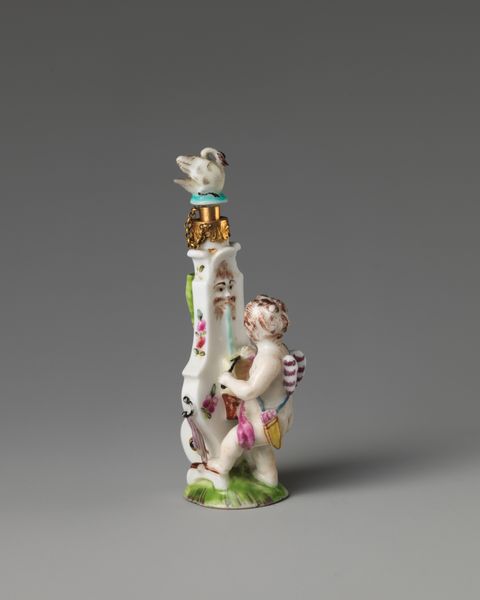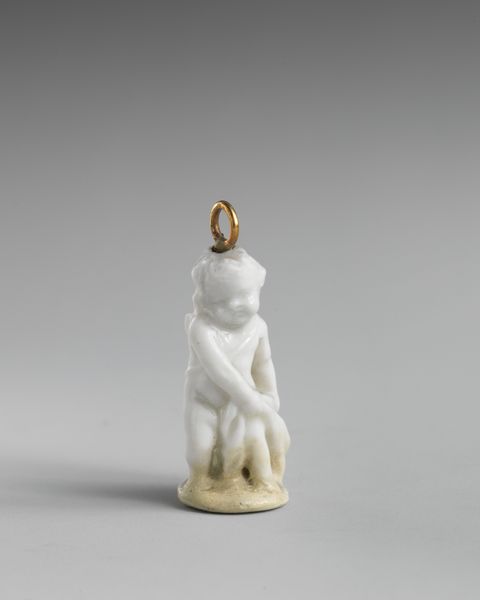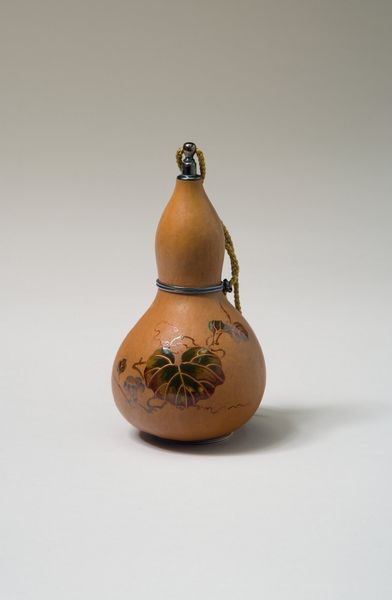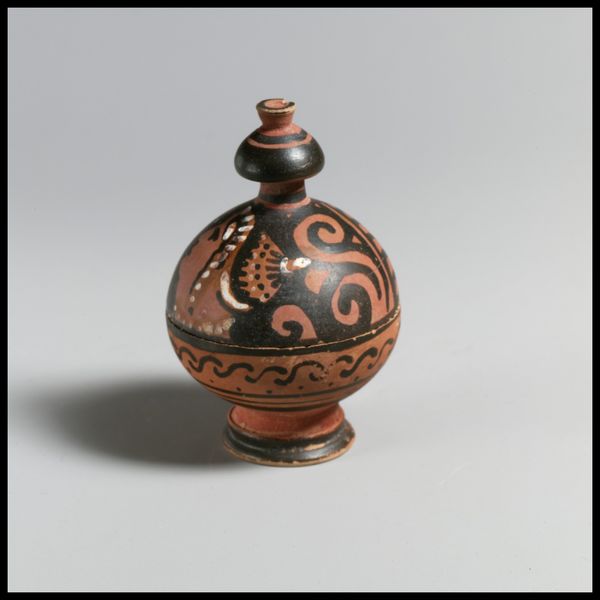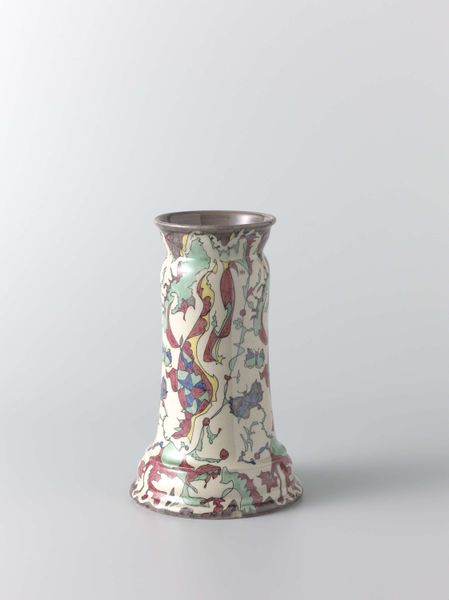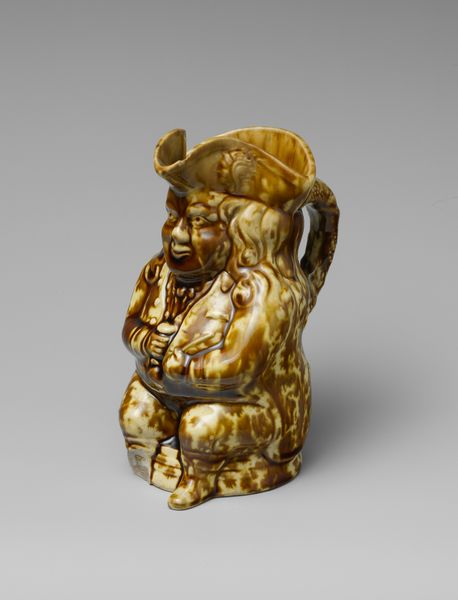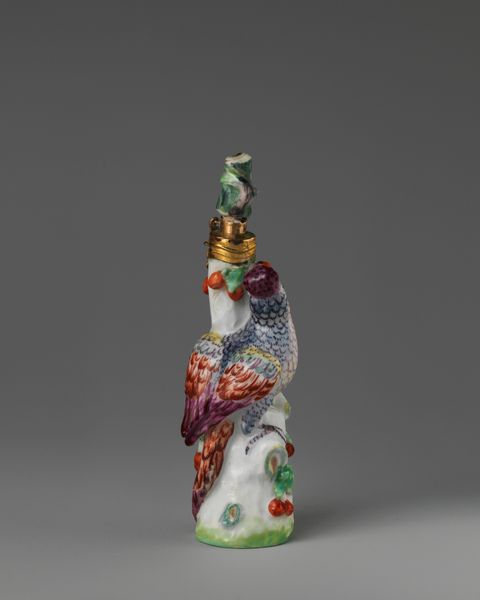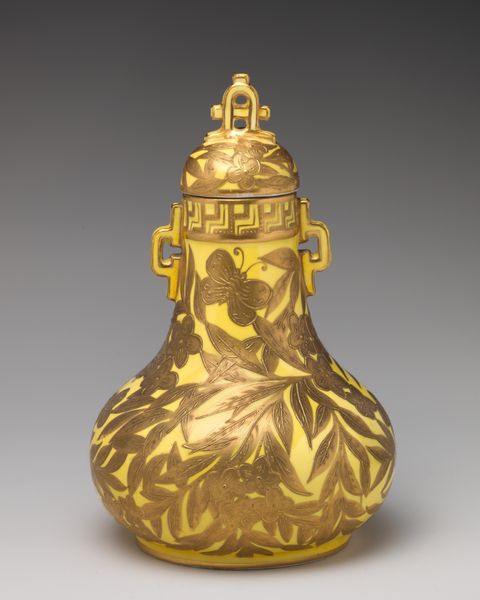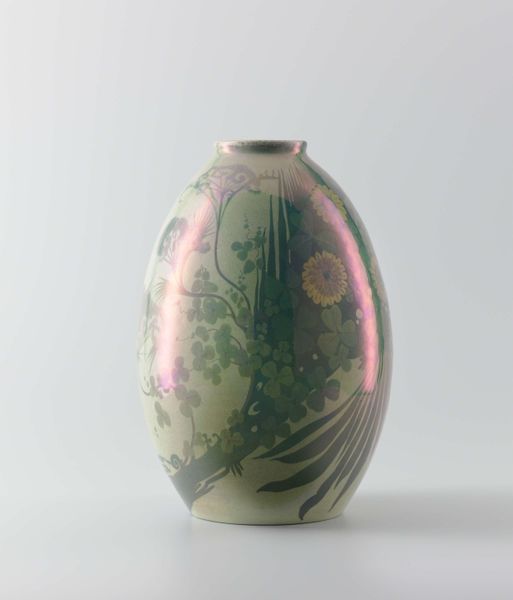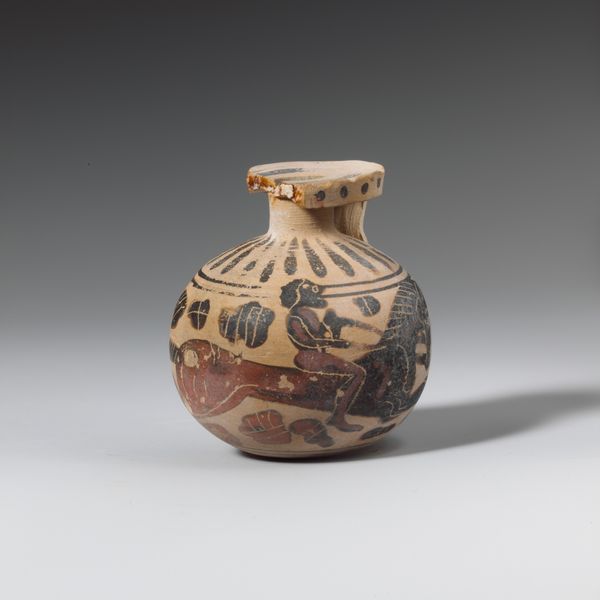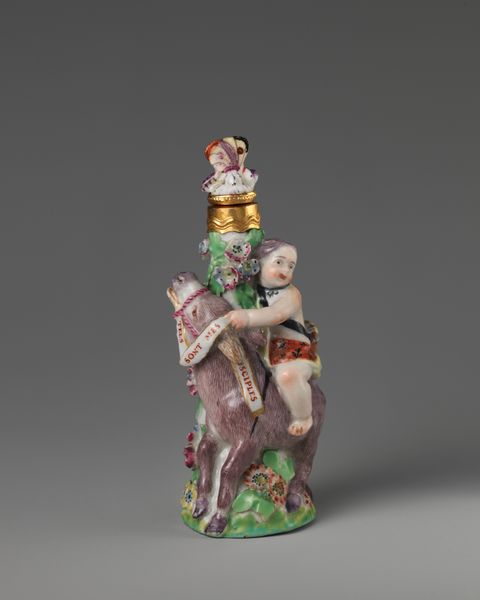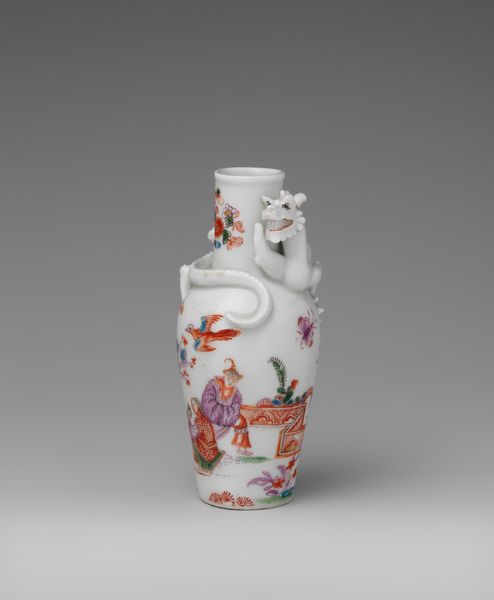
ceramic
#
asian-art
#
ceramic
#
japan
#
decorative-art
Dimensions: 4 3/16 × 2 1/8 × 2 1/8 in. (10.64 × 5.4 × 5.4 cm)
Copyright: No Known Copyright
Editor: This is a covered bottle with butterflies, made around 1900 by Namikawa Yasuyuki. It's ceramic and beautifully decorated with flowers and butterflies. The bottle has this feeling of serene elegance; what's your interpretation of this work? Curator: Thank you for that description. I see it as more than decorative, though. How can we contextualize the role of decorative art historically in the construction of Japanese identity and its relationship with the West? Doesn’t this bottle seem like it was created to meet a particular aesthetic expectation, even demand, in the West? Editor: I see what you mean! It's beautiful but I suppose it feels… designed for a certain gaze. Is that why there's a slight exoticizing feel about it, the very meticulousness and fineness are geared towards proving something about Japanese artistry to Westerners? Curator: Precisely. These objects helped shape a Western image of Japan as a land of exquisite craftsmanship, often obscuring the complex socio-political realities. It’s also important to look at it from an internal, gendered point of view. Consider who the artists were and the gendered associations with this type of fine craftsmanship. Do we know what women might have worked on this bottle? Editor: I hadn't thought about the role of gender in its creation! It adds so many more layers to the way I understand its role, culturally. Curator: Right, remembering who might be in the image versus who isn’t is equally as important. In art history, we often have to unpack assumptions of what stories get told and who gets to tell them. Editor: That gives me a lot to reflect on - thank you. Curator: My pleasure; now you see there's even more here than first meets the eye.
Comments
minneapolisinstituteofart almost 2 years ago
⋮
Historically enameling was only used in Japan for architectural fittings and the use for sword fittings, for example, did not come up until the 16th century. Operating a studio and teaching students, the former samurai Kaji Tsunekichi (1803–1883) is credited with initiating the renewed interest in enameling in the mid-19th century. The city of Nagoya became the center of cloisonné-manufacturing and one of the companies there, the Nagoya Cloisonné Company, won a first prize at the Vienna Exhibition of 1873. Namikawa Yasuyuki was one of the foremost artists and he collaborated with the German chemist Gottfried Wagener (1831–1892) to develop new techniques. Namikawa’s characteristic is the intricate wirework and exceptional attention to detail.
Join the conversation
Join millions of artists and users on Artera today and experience the ultimate creative platform.
